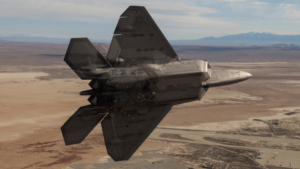Lieutenant Colonel Ronald Charles Speirs wasn’t your typical officer. A man of steely nerves and unwavering resolve, he carved his name into history, leading paratroopers of the legendary “Screaming Eagles” in World War II.
While some hailed him as a fearless hero, others whispered of a ruthless streak. Yet, there’s no denying Speirs’ impact.
From daring reconnaissance missions behind enemy lines to controversial command decisions, discover the life of this complex and captivating figure who embodied the grit and turmoil of war.
Early Life and Military Calling
Born in Edinburgh, Scotland, in 1920, Ronald Speirs’ early life holds few clues to the formidable soldier he would become.
Speirs, the youngest of five, emigrated to the United States with his family at a young age and grew up in Boston, Massachusetts.
In his later biography, Speirs noted that he first came across his calling in the military in high school, where attending the Citizens Military Training Camp (CMTC) during summer vacations was encouraged.
He didn’t enlist right after high school, however, and instead went to college and earned his certificate in accounting.
Nonetheless, his experience of basic military training in high school led him to a commission as a 2nd lieutenant in the Army.
Becoming a Paratrooper
The fateful morning of the harrowing Pearl Harbor attack came and went, and roughly four months later, Speirs entered active duty at Camp Shelby in Mississippi.
Assigned to the 339th Infantry Regiment for basic training, before long, he was a Platoon Leader.
But it was during this time that Speirs was selected to join the ranks of a new kind of soldier: the Parachute Infantry.
The prospect of not only testing himself against the elite but also earning a hefty jump in pay easily swayed him.
Speirs’ orders took him to Camp Toccoa, Georgia, to join the newly formed 506th. Here, a daunting landmark loomed – Currahee Mountain, named in Cherokee for “to stand alone.” This 3-mile climb became a constant companion, a grueling test that weeded out the weak.
135 Paratroopers of Easy Company, 506th Infantry Regiment in Austria, 1945. (Image source: Wikimedia Commons)
Speirs and his fellow trainees would conquer it multiple times a week, etching the phrase “we stand alone, together” into the regiment’s very soul.
Camp Toccoa was just the beginning.
Fort Benning awaited, where Speirs would finally take to the skies, jumping from real planes instead of towers.
This marked a turning point in his transformation into a full-fledged paratrooper.
Paradoxical Leadership
Speirs was a paradox.
Feared for his relentless drive and battlefield courage, he was admired for his tactical prowess.
He led from the front, a whirlwind of energy and aggression, earning a Silver Star for a daring reconnaissance mission in the aftermath of Operation Market Garden in Holland.
Below is an excerpt from his Silver Star citation:
“On October 10, 1944, in the vicinity of Rendijk, Holland […] he (then-First Lieutenant Speirs) reached the river bank with his patrol in the early hours of the morning and […] After dark, he voluntarily swam across to the opposite bank alone, where he found himself in unknown territory […] Lieutenant Speirs was the first to cross the Neder Rijn River in this vicinity, and in so doing he paved the way for other patrols to make similar reconnaissances.”
Yet, rumors of a dark side swirled around him as accusations of prisoner mistreatment and a hair-trigger temper cast a long shadow.
Through D-Day’s bloody chaos, Operation Market Garden’s ill-fated ambition, and the bitter crucible of the Battle of the Bulge, Speirs led his men.
He commanded with an iron fist, demanding unwavering loyalty and pushing them to their limits.
Some comrades saw him as a ruthless taskmaster, others as a leader who wouldn’t ask anything he wouldn’t do himself.
Continuing the Military Journey
The chaotic Second World War finally ended, but Speirs’ military journey continued.
Korea saw him return to combat, this time leading a rifle company, and he took part in Operation Tomahawk, in which he made a combat parachute jump into Munsan-ni in South Korea.
Speirs was among the thousands of paratroopers who jumped out of C-119 and C-46 transport planes amidst scattered resistance upon landing on March 23, 1951.
This daring mission would later become the Army’s second-largest and the last major airborne operation during the Korean War.
Speirs’ post-war career stretched across two decades, taking him from intelligence roles to foreign assignments as a liaison officer and advisor.
He even served as the American director of Spandau Prison in Berlin, a testament to his complex skillset.
Legacy and Controversy
In 1964, after over two decades of service, Speirs finally retired from the Army as a lieutenant colonel.
He retreated from the public eye, leaving behind a legacy as enigmatic as the man himself.
He would then pass away on April 11, 2007, taking with him a lifetime of stories – of heroism under fire, of leadership that pushed boundaries, and of the lingering questions about the darkness that resided alongside his undeniable courage.
Ronald Speirs was a soldier’s soldier, a man hardened by war and driven by an unyielding will.
Whether revered or reviled, his life story remains a captivating testament to the complexities of war and the men who wage it.
Actor Matthew Settle portrayed Speirs in the 2001 award-winning television miniseries ‘Band of Brothers.’



